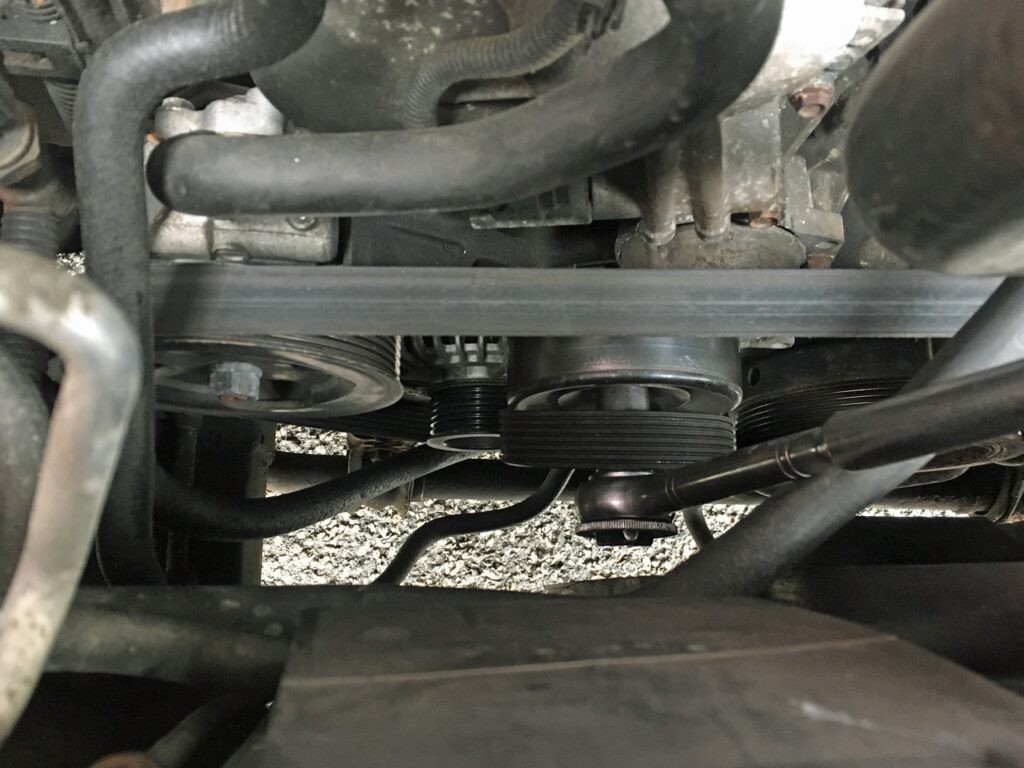Replacing a serpentine belt can seem daunting, but with the right approach, it’s manageable. This guide provides practical tricks for diagnosing noise and efficiently working with serpentine belts, making the process less of a headache.
Modern cars utilize serpentine belts to drive multiple engine accessories, simplifying the system with a single belt. Automatic tensioners eliminate the need for manual adjustments, a significant advantage over older V-belts. However, these tensioners and idler pulleys rely on bearings which can wear out and create noise. Locating the source of the noise within the serpentine belt system is the first step towards a solution.
Isolating the Noise Source
One effective trick for pinpointing the noisy component is to temporarily release the belt tension. This allows you to carefully slip the belt off each pulley individually, spin the pulley by hand, and check for any unusual noise or play. A loose pulley with a grinding or rattling sound indicates a potential problem.
This technique allows for a hands-on diagnosis, confirming whether the noise originates from the tensioner pulley, idler pulley, water pump, power steering pump, a/c compressor, or another component. While a mechanic’s stethoscope can also help, physically manipulating each pulley provides a more direct assessment. This method was successfully used to identify a faulty tensioner pulley on a Nissan Armada, highlighting the effectiveness of this simple trick.
Working with Tight Engine Bays
Accessing the serpentine belt in modern cars can be challenging due to the tightly packed engine components. Often, the belt is hidden beneath the air filter housing and fan shroud, making visual inspection difficult.
Even with a belt routing diagram, correctly threading a new belt can be confusing. The complex path of the belt, weaving through various pulleys and around the fan, requires careful attention. This complexity underscores the importance of understanding the belt routing specific to your vehicle before attempting replacement.
Applying the Trick: A Real-World Example
The aforementioned trick proved invaluable in diagnosing a failing alternator in a BMW 530i. Although the voltage regulator was replaced without removing the alternator, confirming the health of the alternator bearings was crucial.
By releasing the belt tension and isolating the alternator pulley, it was possible to spin and check for play, confirming that the alternator itself was in good working order. This saved the time and effort of unnecessarily removing the alternator.
Conclusion: Simplifying Serpentine Belt Maintenance
Working with serpentine belts doesn’t have to be a nightmare. By using the simple trick of releasing tension and isolating each pulley, diagnosing noise and identifying faulty components becomes significantly easier. This hands-on approach, coupled with a thorough understanding of your vehicle’s belt routing, can streamline the process of serpentine belt maintenance and repair. If you hear a noise that changes with engine speed, it’s likely related to the serpentine belt system. This simple trick can save you time and potentially prevent more serious engine problems.


